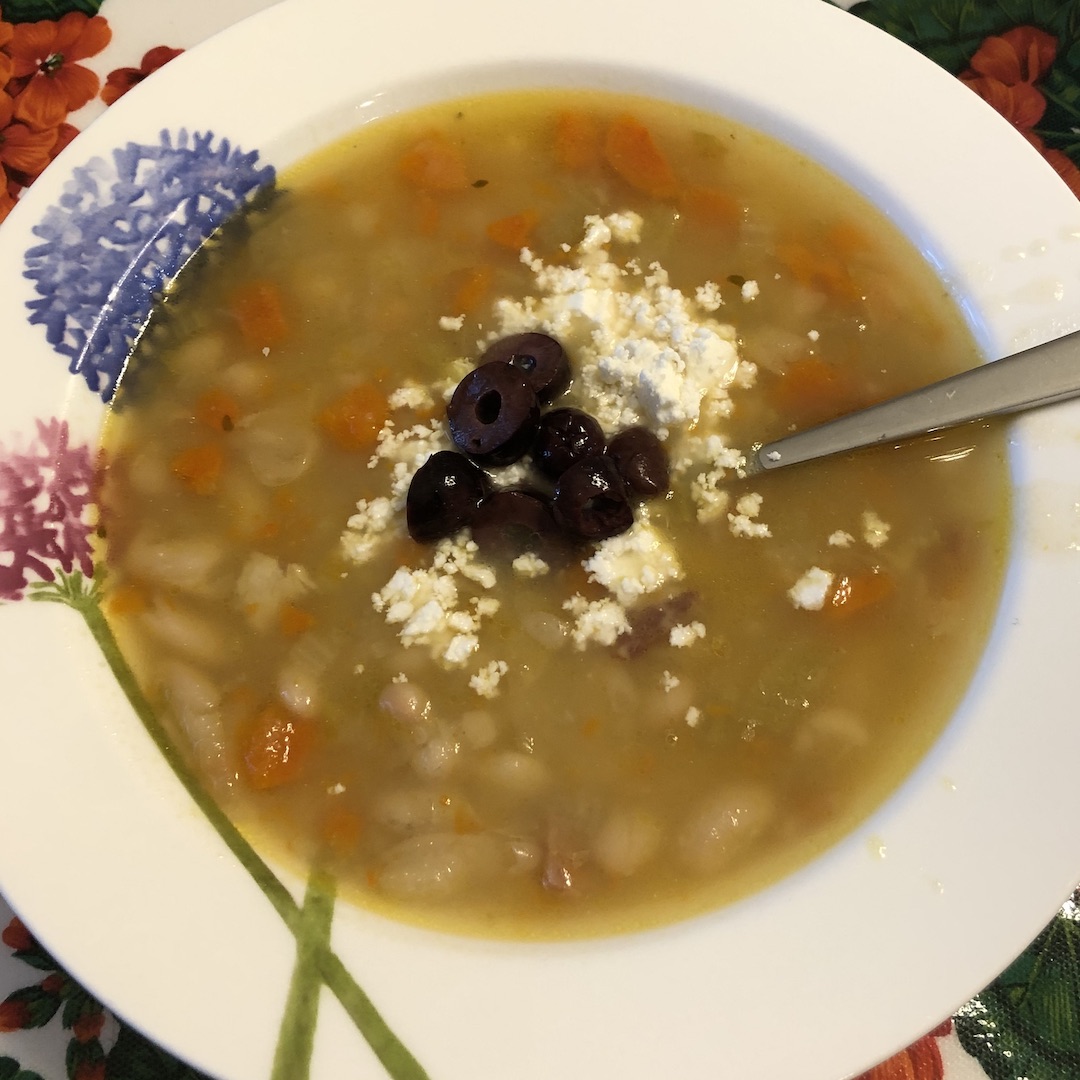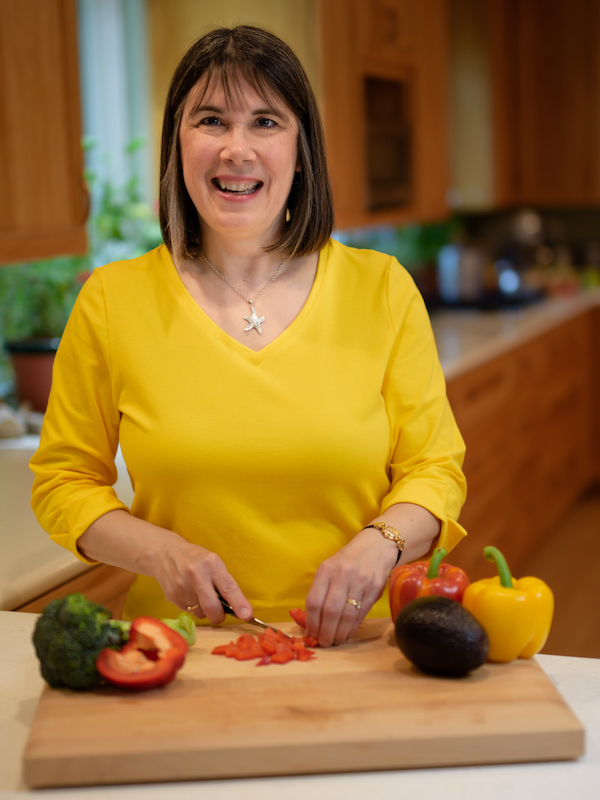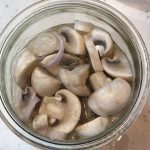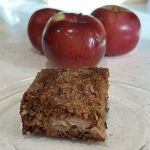
The Cooking Framework Quiz is available by clicking the button below.
Don’t miss an episode!
The button below will take you to Apple Podcasts to subscribe.
Or visit your favorite podcast provider to subscribe.
Thank you!
Transcript
Welcome to The Sensitive Kitchen. Where home cooks are inspired to Cook to Enable Those You Love to Flourish.
I’m Cindy Sullivan, registered dietitian, passionate nutrition educator, and accomplished home cook. Whether you’re changing how you cook for food sensitivities, allergies, intolerances, or just trying to eat healthier on a budget, you’re in the right place. Most episodes, I will share favorite recipes as well as modification tips, and nutrition benefits. Occasionally I’ll have a guest or special episode like modifying holiday favorites.
My favorite foods? They’re raspberries and homemade chocolate chip cookies. My latest cooking project was long fermented sourdough bread.
Today, I want to share one of my all time favorite ways to eat beans, Tuscan white beans. I discovered it during a time in our food journey when I was struggling. We eat legumes a couple of times a week, but we recently had eliminated onions and garlic from our diet without onions and garlic. All my bean dishes tasted so bland. This is the only one that I enjoyed without onions or garlic. Even though we now eat garlic and shallots as an onion replacement, I still make this bean dish without them.
It’s a cross between a soup and a stew. I like it with a little more broth. My daughter likes it with less. Before I tell you about this recipe, though, I want to continue to sell you on including more legumes in your diet. Remember legumes are dried peas and beans.
You don’t ha- we don’t eat them dry, but they’re mature. So they have more protein, more vitamins, more minerals in them. Besides eating more vegetables and besides eating enough variety in your diet, I believe legumes is one of the best things you can do for your diet. Plus they’re inexpensive, quick if you use canned, high-end plant protein, high in fiber, high in the B-vitamin folate good sources of zinc, potassium, magnesium, they’re truly a nutrient powerhouse.
In addition, you don’t have to be a vegetarian to enjoy beans. In fact, most of my favorite bean dishes, like the one I’m sharing today are actually flavored with a little bit of meat. Now I’ve been reviewing studies on legumes and health. And for those of you who want more information, let me point you to an article published in the clinical in clinical diabetes from the American diabetes association, it was published in 2015.
So it’s a little over five years old and I’ll put the link to it in the show notes because it summarizes the research in an easy to understand manner. I want share five different diseases and the risk factors that this article summarizes, and then share a couple of other things with you as well. First of all, for diabetes, the positive effects of lagoons on reductions in A1C and blood glucose levels are well-documented for high blood pressure. Legumes are rich in potassium, magnesium, and fiber.
Those of you who are familiar with the DASH diet know that these nutrients helped lower blood pressure as much as one blood pressure medication. A systemic review and meta analysis combined the results of eight different clinical trials. They involved more than 500 people. And half of the people who were overweight or obese found reductions in blood pressure in those who ate legumes. in subjects who consumed slightly less than a cup of legumes each day for 10 weeks, blood pressure, significantly decreased.
And in another study, which had 113 obese subjects, if they consumed two servings of legumes and four servings of whole grains per day for 18 months in place of refined carbohydrates, their blood pressure, their triglycerides, their weight, and their waist circumference were all reduced. Now I will be the first to tell you that this is a lot of legumes in this, used in this study, but it may help prevent or reduce medication. And, you know, medication has its own costs and side effects.
So you have to weigh what it’s worth to you. Plus as in a lot of things for prevention, if you don’t yet have a lot of the side effects or the medications, you can usually do less. So a diet that regularly includes legumes may help with weight control – the fiber, protein, and slowly digested carbohydrates found in legumes may aid in satiety so you feel full longer. Using data from the national health and nutrition examination study, which is known as NHANES. It was observed that adults who consumed a wide variety of legumes had significantly lower body weights compared with those who did not consume legumes. Legume consumers were also less likely to be obese with a BMI of greater than 30 than people who did not consume legumes.
Now heart disease seems to be the most debated health benefit. Looking at non soy legumes, when they look at a meta analysis, which is where they take all or a bunch of studies and lump them together and say, what do all these studies together tell us? They looked at 10 randomized control trials and legumes were consumed for a minimum of three weeks.
And they revealed that eating legumes had a cholesterol lowering effect. Researchers saw improvements in the legume groups with LDL, cholesterol and triglycerides, as well as in fasting blood glucose and insulin levels. However, other studies have not shown an actual decrease in heart disease among people who ate legumes, but reviews did find that lagoons lowered cancer risk and overall mortality.
Despite the well-documented health benefits of lagoon consumption, the actual intake of legumes in most Americans remains low according to NHANES data. On any given day, about 8% of Americans consume legumes and peas. Perhaps some of this is because people don’t know how to prepare them or incorporate them into their eating plans, or they think they take too much time. If any of those are the case for you and you don’t have too many legumes in your diet or recipes that your family likes, let me help you get over this hurdle.
Even if you cannot eat all legumes – for example, we avoid garbanzo beans in my family – but you can find some that you can eat. On the Sensitive Kitchen Podcast in the almost six months we’ve been on the air, look for the quick white bean tomato parsley and Parmesan in episode 003 – one of my very favorite bean recipes and my daughter’s favorite lunch.
In January, we looked at lentils and tomato sauce – episode 013. Today, we’re looking at Tuscan beans episode – 021. Stay tuned for Cinco de Mayo. I’m looking at bean-feta quesadillas right around then. So tell me what your favorite legume recipes are, how you would like to modify them and where you’re stuck today.
I made Jane Brody’s favorite lentil soup for lunch. It’s also my favorite lentil soup, but it’s her recipe. So this time I used leftover corn beef broth from St Patrick’s day, instead of chicken broth, it was still delicious. It was one of those waste not, want not moments. And as an added bonus, I didn’t have to make the chicken broth.
I didn’t spend any extra money or time to take the chicken off the bones after I made the stock with it. I already had the corn beef broth from when I cooked corn beef for St. Patrick’s day. So it was an added bonus and a delicious lunch. And I probably have five more lunches or dinners to put in the freezer from making soup today. It was a good morning. So I hope I’ve encouraged you to try some more legumes in your diet.
But before we talk about today’s recipe, I need to give you one more piece of advice. And that is if you’re not currently consuming many legumes in your diet, increase them very slowly to prevent the gas that often accompanies them. Let’s talk about our recipe today.
Tuscan white beans is a fairly simple bean dish, but it does require a few things. First of all, this is a slow cooker recipe. So you need to have the appropriate sized slow-cooker I use, I know it’s a six and a half or seven quart. It’s a big one. If you have a smaller one, no problem. Cut the recipe in half.
Chicken broth. Use your best chicken broth. Sometimes when I make make my chicken broth that comes out a little weak. Sometimes it’s full of flavor. Use the one that’s full of flavor in this recipe, since it really is the star of the show, along with the garnishes. And that’s my second one is the garnishes. The garnishes are goat cheese and olives. And these garnishes really enhance this recipe.
We use an inexpensive goat cheese from trader Joe’s for creamy goodness. If I can get Nicoise olives, I use them with, or without pits, they tend to be less salty, but if not, and usually I can’t find them, I just slice some pitted, Kalamata olives. If you’re dairy free, just use the olives.
Prosciutto. This is the only recipe I use prosciutto. I can usually find it with just pork and salt as ingredients and I, this recipe only uses several slices. So if it comes in a package, I usually freeze the rest for the next time I make this recipe. So although it’s pricey, this recipe doesn’t use very much.
Although this is a slow cooker recipe. Tuscan white beans does not have a long cook time, only about three hours. Plus it requires some time on the stove before going into a slow cooker. So it will save you some time right before dinner, but you’ll have to be available for some dinner prep about four hours before you want to eat. My slow cooker has a special insert that can go right on top of the stove and you can brown or cook things right on the stove.
If yours does not, you’ll only need to dirty one additional pan in addition to your slow cooker. Remember, the recipe with all the directions and amounts and pictures is on foodsensitivitykitchen.com/episode021. Besides the ingredients I mentioned above, you’re going to need carrots, celery, thyme. I use fresh thyme because I bring mine in from sitting on my patio and it sits in my window, kitchen window or dining room window in the winter time.
But you could use dried and dried great Northern beans. The evening before you want to cook this recipe, rinse your beans and pick out any stones. Then cover the beans with about two inches of water and soak them overnight. I usually do this right in my slow cooker. About four hours before you want to eat chop the carrots and celery.
Next is the most time-consuming part of this recipe, which is chopping and separating the prosciutto. To me that takes the most time, but it adds delicious flavor. So it’s worth it. Cut the prosciutto in about half inch pieces. I find my kitchen shears worked best for me, but you might prefer a knife. Saute it in olive oil or avocado oil for about eight minutes. Remove the prosciutto from the pan and add the celery.
Saute for about five minutes over medium-low heat, stirring occasionally. Add the carrot, saute about three to five more minutes, and the vegetables do not need to be fully cooked. Add the drained beans, the broth, and the thyme. A note about the thyme: I do not take all the individual thyme leaves off the stems. I just wash the stems with the leaves attached and place them in the pan.
When the beans are done, I can easily pull the stems out. Cover and heat the mixture on the stove until it comes to a boil. If your stock is frozen, as mine usually is, it’ll take longer, perhaps about 15 minutes to come to a boil. Transfer to the slow cooker. Or if you’re doing this in your slow cooker insert because yours is able to go on the stove, transfer it to the slow cooker from the stove and cook it on high for about two and a half to three and a half hours.
You want your beans to be soft, but you want them to hold their shape. Put Tuscan white beans into bowls and let diners put their own goat, cheese and olives on the top. Serve it with a crusty bread and a salad or broccoli or both and enjoy.
This recipe will either serve a crowd or you’ll have some leftover for freezer meals. When you don’t have time to cook, you can always make less, just be aware that you do need to fill your slow cooker appropriately. So you may need to use a different size slow cooker if you have half the recipe. Thank you so much for joining me today.
Resources:
Here is an excellent summary of both the research and practical ways to incorporate legumes in your diet. Here is the link to read the article.
Legumes: Health Benefits and Culinary Approaches to Increase Intake, Rani Polak, Edward M. Phillips and Amy Campbell, Clinical Diabetes,




